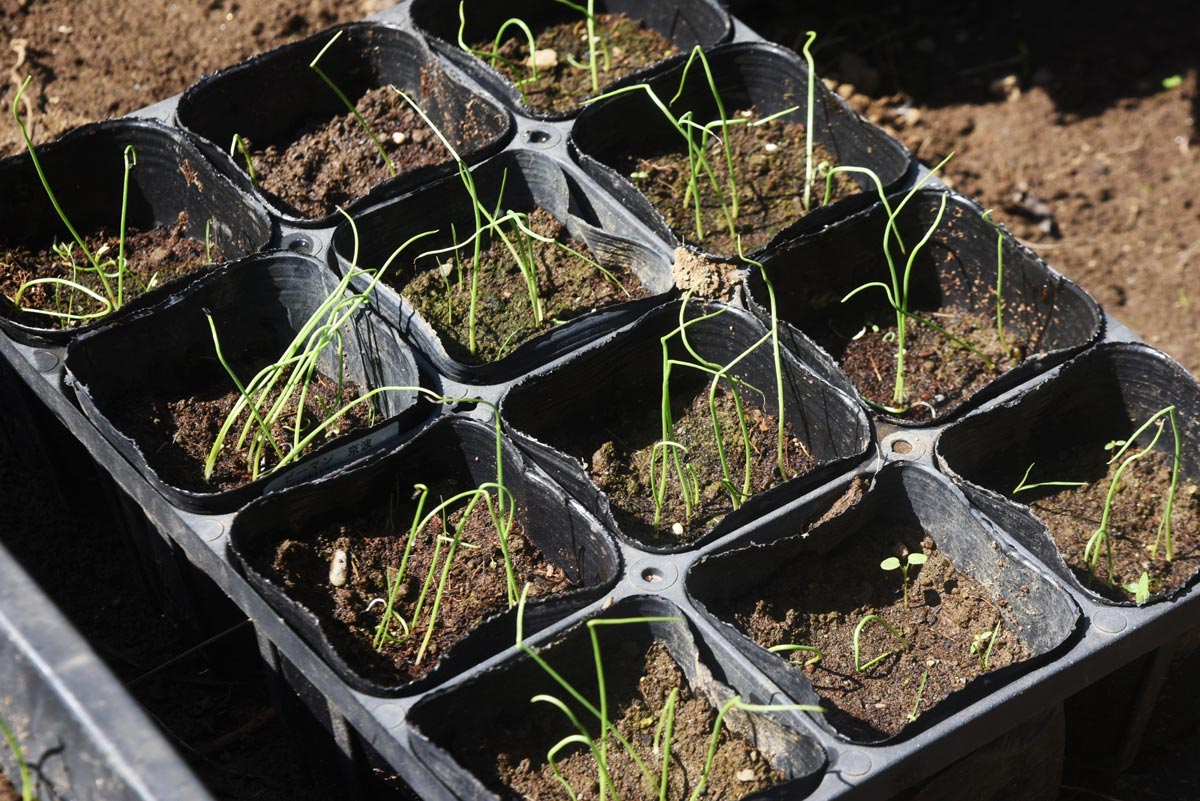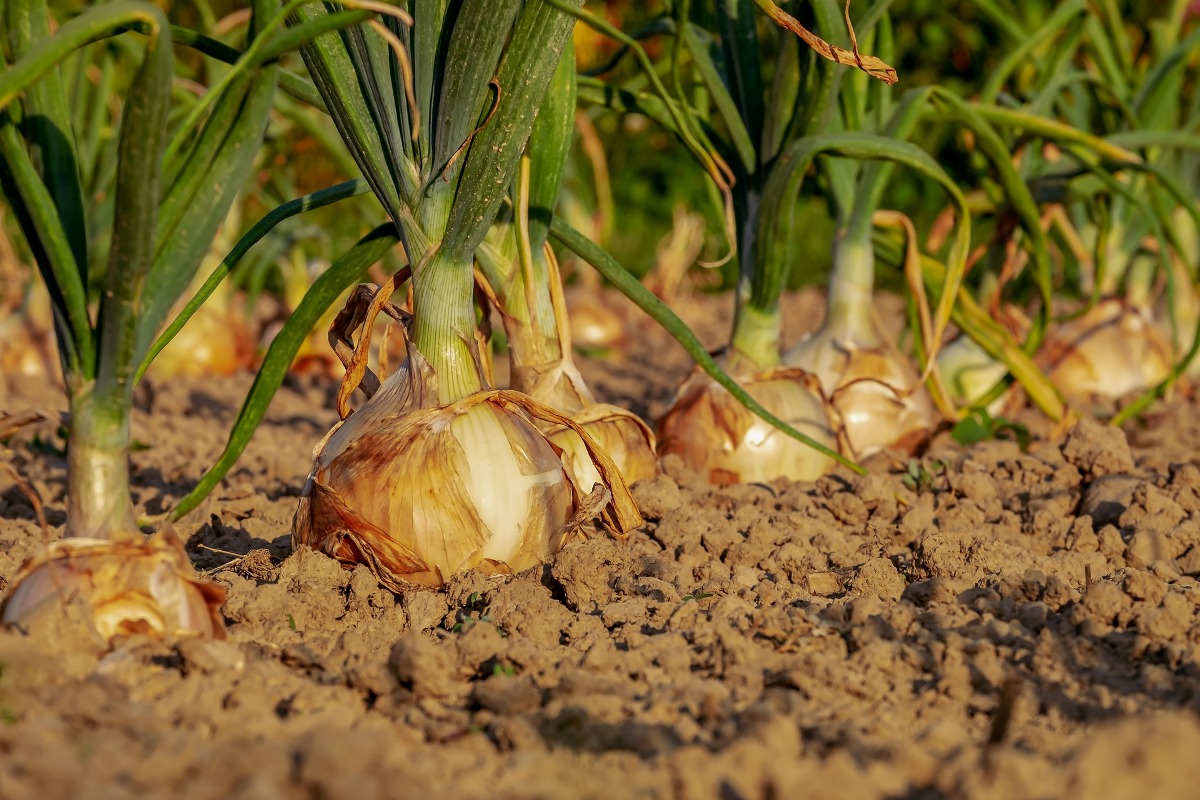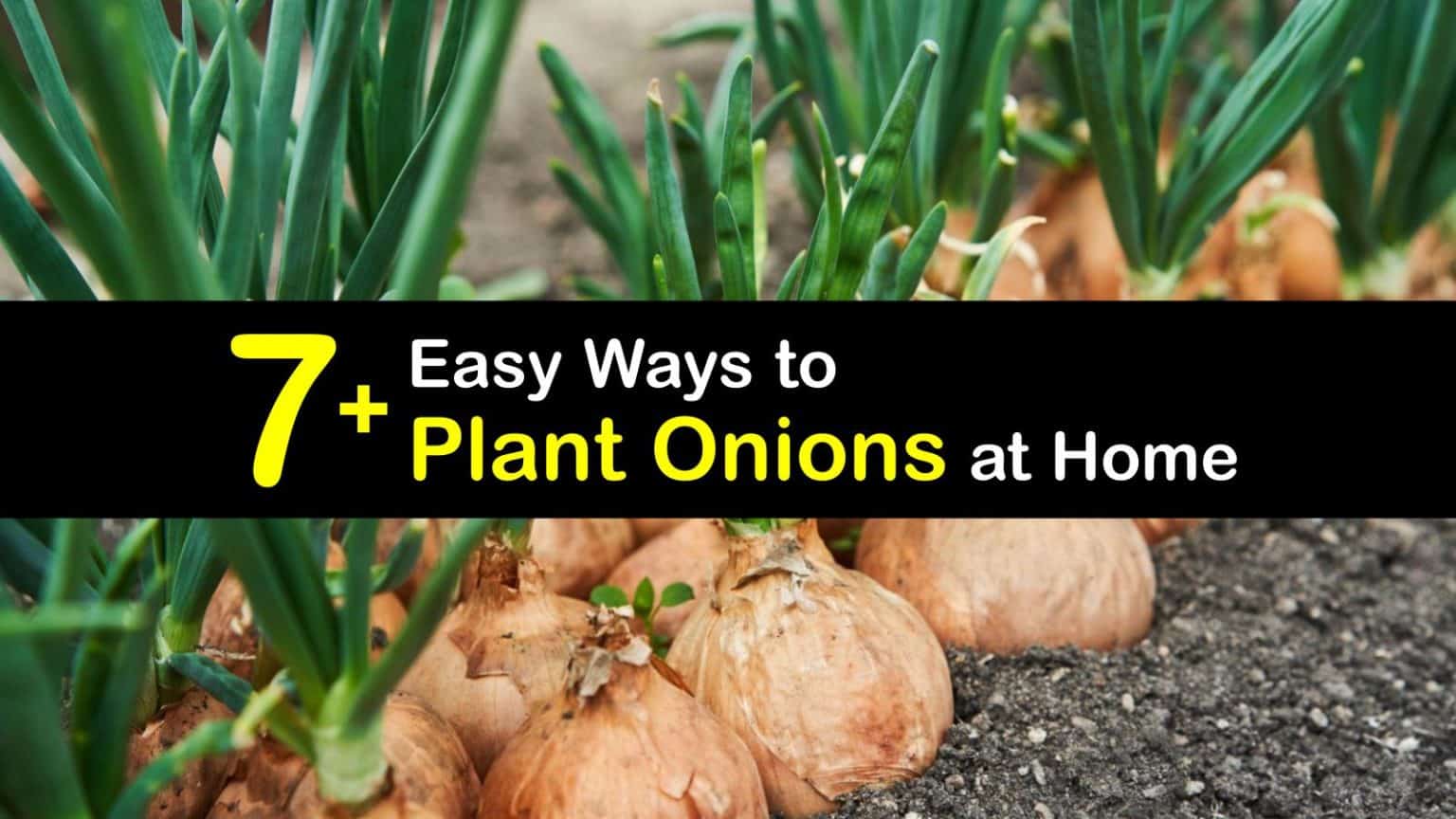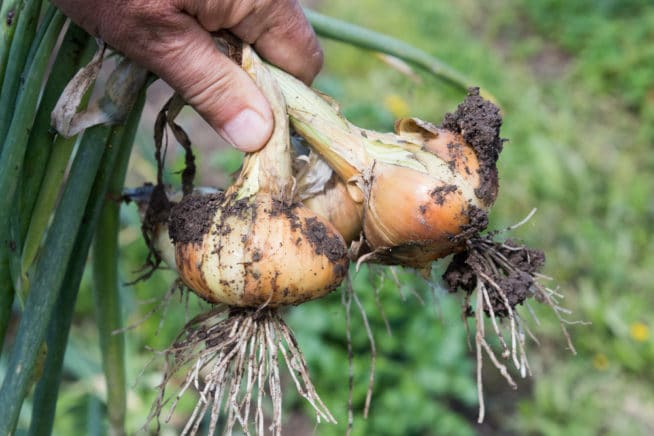Preparing the Soil for Optimal Onion Growth
Before planting onion seeds, it’s essential to prepare the soil to create a fertile ground for optimal growth. Onions require a well-draining, loose soil with a pH between 6.0 and 7.0. To achieve this, start by testing the pH level of your soil using a soil testing kit. If the pH level is too high or too low, add lime or sulfur to adjust it accordingly.
Next, remove any debris, rocks, and weeds from the soil. This will prevent competition for water and nutrients and reduce the risk of pests and diseases. Use a garden fork or spade to loosen the soil to a depth of about 12 inches. This will help to break up any clods and aerate the soil.
Add organic matter such as compost or well-rotted manure to the soil. This will help to improve the soil’s structure, fertility, and overall health. Mix the organic matter into the soil, taking care not to overdo it, as too much can cause the onions to become too lush and prone to disease.
Finally, rake the soil to create a smooth, even surface. This will help to prevent the onion seeds from becoming dislodged during planting and ensure good contact with the soil. By following these steps, you’ll be able to create a fertile ground for your onions to grow, setting them up for success and a bountiful harvest.
When learning how to plant onion seeds, it’s crucial to remember that soil preparation is key. By taking the time to prepare the soil properly, you’ll be rewarded with healthy, thriving onions that will provide you with a delicious and flavorful harvest.
Choosing the Right Onion Variety for Your Climate
When it comes to growing onions, selecting the right variety for your climate is crucial for optimal growth and flavor. There are several types of onion varieties, each with its unique characteristics, advantages, and disadvantages. Understanding the different types of onion varieties and their specific growing conditions will help you make an informed decision when choosing the best variety for your region’s climate.
One of the most popular onion varieties is the ‘Yellow Granex’ onion, known for its sweet and mild flavor. This variety is well-suited for warm and dry climates, making it an excellent choice for gardeners in regions with low humidity. Another popular variety is the ‘Vidalia’ onion, which is known for its sweet and mild flavor. This variety is best suited for regions with mild winters and warm summers.
For gardeners in cooler climates, the ‘Walla Walla’ onion is an excellent choice. This variety is known for its sweet and mild flavor, and is well-suited for regions with cool and moist climates. The ‘Redwing’ onion is another popular variety, known for its sweet and mild flavor, and is well-suited for regions with cool and dry climates.
When selecting an onion variety, it’s essential to consider the specific growing conditions for each variety. Check the seed package or consult with a gardening expert to determine the optimal growing conditions for the variety you choose. This will ensure that you provide the best possible conditions for your onions to grow and thrive.
Learning how to plant onion seeds requires careful consideration of the variety you choose. By selecting the right onion variety for your climate, you’ll be able to enjoy a bountiful harvest of delicious and flavorful onions. Whether you’re a seasoned gardener or just starting out, choosing the right onion variety is a crucial step in growing onions successfully.
Obtaining High-Quality Onion Seeds for Planting
When it comes to growing onions, using high-quality seeds is essential for optimal growth and flavor. High-quality seeds are more likely to germinate and produce healthy, vigorous plants. To ensure that you get the best possible results from your onion crop, it’s crucial to source seeds from reputable suppliers.
Look for seed suppliers that specialize in onion seeds and have a good reputation among gardeners. Check the seed package for information on the seed’s origin, quality, and germination rate. A high-quality seed package should include information on the seed’s characteristics, such as its flavor, texture, and disease resistance.
Before planting, check the seed viability by performing a simple germination test. Place a few seeds in a moist paper towel and store them in a warm, dark place. Check the seeds after 7-10 days and count the number of seeds that have germinated. If the germination rate is low, it may be best to source new seeds from a different supplier.
Proper seed storage is also essential for maintaining seed viability. Store seeds in a cool, dry place, away from direct sunlight and moisture. Use airtight containers or envelopes to keep the seeds fresh and prevent moisture from entering. By storing seeds properly, you can ensure that they remain viable for a longer period.
Learning how to plant onion seeds requires attention to detail, including sourcing high-quality seeds. By taking the time to select the right seeds and store them properly, you’ll be able to enjoy a bountiful harvest of delicious and flavorful onions. Whether you’re a seasoned gardener or just starting out, using high-quality seeds is a crucial step in growing onions successfully.
Understanding the Best Time to Plant Onion Seeds
When it comes to planting onion seeds, timing is everything. Planting at the right time can make all the difference in the success of your onion crop. The ideal time to plant onion seeds varies depending on your region’s climate and weather conditions.
In general, onion seeds can be planted in early spring or late summer/early fall, about 4-6 weeks before the last frost date. In regions with mild winters, onion seeds can be planted in the fall, about 8-10 weeks before the first frost date. In areas with hot summers, it’s best to plant onion seeds in the early spring, as soon as the soil can be worked.
To determine the best time to plant onion seeds in your area, check the weather forecast and soil temperature. Onion seeds prefer a soil temperature of around 60-70°F (15-21°C) for optimal germination. You can check the soil temperature by inserting a thermometer into the soil or by using an online soil temperature guide.
Daylight hours also play a crucial role in determining the best time to plant onion seeds. Onion seeds require a certain amount of daylight to germinate and grow. In general, onion seeds require at least 12-14 hours of daylight to germinate and grow.
Learning how to plant onion seeds requires attention to detail, including understanding the best time to plant. By planting onion seeds at the right time, you’ll be able to enjoy a bountiful harvest of delicious and flavorful onions. Whether you’re a seasoned gardener or just starting out, timing is everything when it comes to planting onion seeds.
Before planting, make sure to check the specific growing conditions for your region and adjust your planting schedule accordingly. This will ensure that you provide the best possible conditions for your onion seeds to germinate and grow.
Sowing Onion Seeds: A Step-by-Step Guide
Sowing onion seeds is a straightforward process that requires attention to detail. To ensure optimal growth and development, follow these steps to sow your onion seeds correctly.
Step 1: Prepare the Seedbed
Before sowing onion seeds, prepare the seedbed by loosening the soil to a depth of about 12 inches. Remove any debris, rocks, or weeds that may interfere with seed germination or growth. Use a garden fork or spade to loosen the soil, and then rake it to create a smooth, even surface.
Step 2: Sow Seeds at the Correct Depth
Onion seeds should be sown at a depth of about ¼ inch. Use a seed starting tray or a small container filled with a good quality seed starting mix. Place one or two seeds in each cell or container, depending on the variety. Cover the seeds with a thin layer of soil, and then firm the soil gently to ensure good contact.
Step 3: Space Seeds Correctly
Onion seeds should be spaced about 1-2 inches apart, depending on the variety. Use a ruler or a measuring tape to ensure accurate spacing. This will allow for proper air circulation and prevent overcrowding, which can lead to disease and pest problems.
Step 4: Water and Provide Adequate Light
After sowing onion seeds, water them gently but thoroughly. Make sure the soil is consistently moist but not waterlogged. Provide adequate light for the seeds to germinate and grow. Onion seeds require indirect light, so place them in a sunny location but avoid direct sunlight.
By following these steps, you’ll be able to sow your onion seeds correctly and set them up for optimal growth and development. Remember to keep the soil consistently moist and provide adequate light for the best results.
Learning how to plant onion seeds requires attention to detail, including sowing seeds at the correct depth and spacing them correctly. By following these steps, you’ll be able to enjoy a bountiful harvest of delicious and flavorful onions.
Providing Optimal Care for Onion Seedlings
Once onion seeds have germinated and seedlings have emerged, it’s essential to provide them with optimal care to promote healthy growth and development. This includes watering, fertilizing, and controlling pests and diseases.
Watering Onion Seedlings
Onion seedlings require consistent moisture, especially during the first few weeks after germination. Water them gently but thoroughly, making sure the soil is consistently moist but not waterlogged. Avoid overwatering, which can lead to root rot and other problems.
Fertilizing Onion Seedlings
Onion seedlings benefit from regular fertilization, especially during the early stages of growth. Use a balanced fertilizer that is high in nitrogen, phosphorus, and potassium. Follow the instructions on the fertilizer package for application rates and timing.
Controlling Pests and Diseases
Onion seedlings are susceptible to pests and diseases, such as aphids, whiteflies, and fungal infections. Use organic or integrated pest management (IPM) methods to control these problems. Inspect your seedlings regularly and take action at the first sign of trouble.
Thinning Onion Seedlings
As onion seedlings grow, they may become overcrowded, which can lead to reduced growth and increased disease susceptibility. Thin seedlings to about 1-2 inches apart, depending on the variety. Use scissors or a small tool to carefully remove excess seedlings, taking care not to damage the remaining plants.
Transplanting Onion Seedlings
Once onion seedlings have 2-3 sets of leaves, they can be transplanted into larger containers or directly into the garden. Harden
Common Mistakes to Avoid When Planting Onion Seeds
When planting onion seeds, it’s essential to avoid common mistakes that can lead to poor growth, reduced yields, and increased susceptibility to pests and diseases. By being aware of these mistakes, you can take steps to prevent them and ensure a successful onion crop.
Overwatering
One of the most common mistakes when planting onion seeds is overwatering. Onions require consistent moisture, but excessive water can lead to root rot and other problems. Check the soil regularly and avoid watering during periods of high rainfall or when the soil is already saturated.
Underwatering
On the other hand, underwatering can also be detrimental to onion growth. Onions require adequate moisture to germinate and grow, so make sure to water them regularly, especially during the first few weeks after planting.
Inadequate Soil Preparation
Another common mistake is inadequate soil preparation. Onions require a well-draining, fertile soil to grow, so make sure to test the pH level, remove debris, and add organic matter before planting.
Incorrect Sowing Depth
Sowing onion seeds at the incorrect depth can also lead to poor growth. Onions should be sown at a depth of about ¼ inch, so make sure to follow the instructions on the seed package or consult with a gardening expert.
Insufficient Light
Onions require adequate light to grow, so make sure to provide them with sufficient light. Onions can be grown in partial shade, but they will do best in full sun.
By avoiding these common mistakes, you can ensure a successful onion crop and enjoy a bountiful harvest of delicious and flavorful onions. Remember to provide optimal care for your onion seedlings, including watering, fertilizing, and controlling pests and diseases.
Learning how to plant onion seeds requires attention to detail and a willingness to learn from common mistakes. By following these tips and avoiding common mistakes, you can enjoy a successful onion crop and add fresh, flavorful onions to your favorite recipes.
Harvesting Your Onion Crop: Timing and Techniques
After months of careful planning and attention, your onion crop is finally ready to harvest. But how do you know when the onions are ready, and what’s the best way to harvest them? In this section, we’ll explore the timing and techniques for harvesting your onion crop.
Determining Readiness
Onions are ready to harvest when the tops of the plants begin to yellow and fall over. This is a sign that the bulbs are mature and ready to be picked. You can also check for readiness by gently digging around the onions with a fork. If the bulbs are firm and the skin is dry, they’re ready to harvest.
Lifting
One of the most common methods for harvesting onions is lifting. This involves using a garden fork to carefully loosen the soil around the onions, then lifting them out of the ground. Be careful not to damage the bulbs or the roots, as this can reduce their quality and storage life.
Digging
Digging is another method for harvesting onions. This involves using a shovel or garden fork to dig around the onions, then carefully lifting them out of the ground. Digging can be a bit more labor-intensive than lifting, but it’s a good option if you have a large crop to harvest.
Pulling
Pulling is a simple and effective method for harvesting onions. This involves grasping the tops of the plants and gently pulling them out of the ground. Be careful not to pull too hard, as this can damage the bulbs or the roots.
After Harvesting
After harvesting your onion crop, it’s essential to dry the bulbs thoroughly to prevent rot and spoilage. You can do this by spreading the onions out in a warm, dry place, or by using a food dehydrator. Once the onions are dry, you can store them in a cool, dark place for several months.
By following these tips and techniques, you can enjoy a bountiful harvest of delicious and flavorful onions. Remember to always handle the onions with care, and to store them properly to maintain their quality and freshness.
Learning how to plant onion seeds is just the first step in growing a successful onion crop. By following these guidelines and techniques, you can enjoy a delicious and flavorful harvest of homegrown onions.


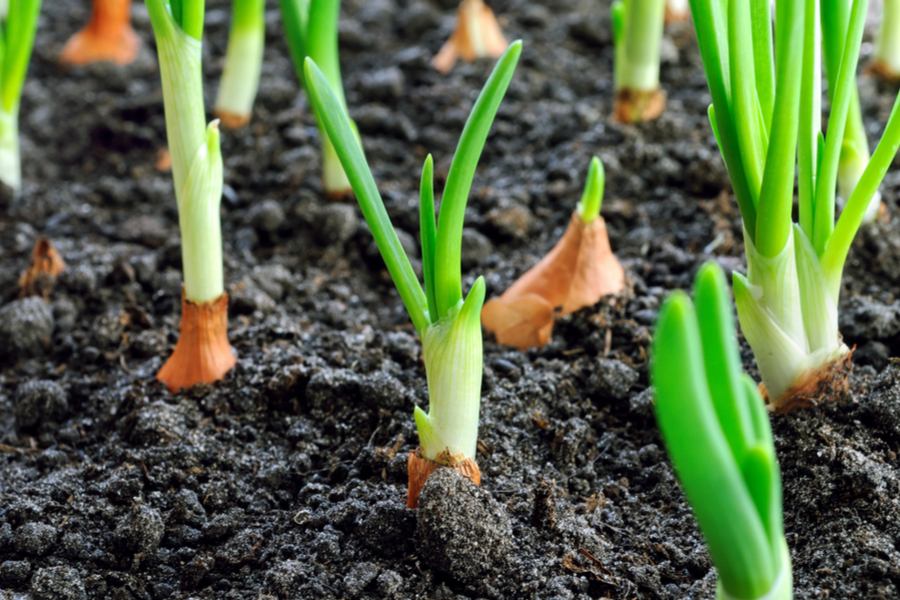
:max_bytes(150000):strip_icc()/growing-onions-1403447-04-a1058b6dc67e4b1cadac626d5185c6ba.jpg)
